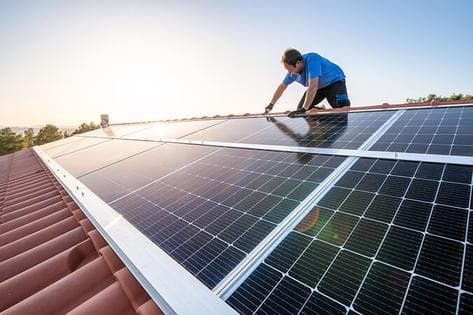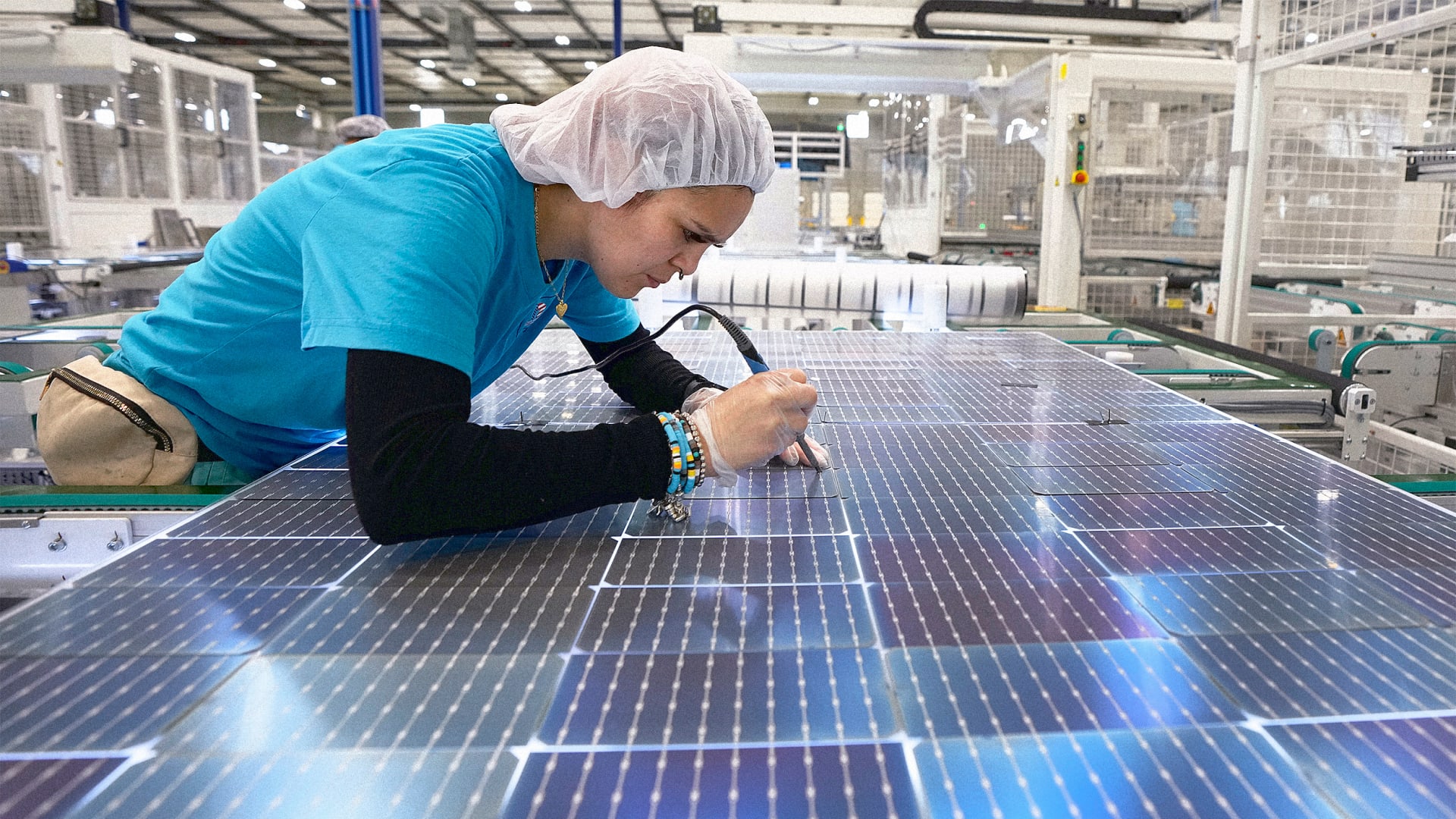Home Solar Energy Systems PA: Our Company Concentrates On The Installation And Management Of Photovoltaic Energy Systems
History and Advancement of Solar Panel Business
The beginning of photovoltaic panel companies can be traced back to the 1800s when Alexandre Edmond Becquerel discovered the photovoltaic impact. Would he have imagined how his discovery would transform the method we harness energy?
Early Beginnings

In 1954, Bell Labs established the first practical photovoltaic cell. This marked a considerable turning point in the history of solar power. They were initially utilized to power space satellites, however who knew this was just the start?
Evolution and Development
- In the 1970s, an energy crisis resulted in increased interest in eco-friendly energy sources, consisting of solar energy.
- By the 1990s, improvements in innovation and increasing environmental awareness resulted in the growth of photovoltaic panel companies worldwide.
A New Age
As we got in the 21st century, the solar market saw an exponential development. The demand for tidy and renewable energy caused a new era in the solar panel market.
Remarkable Truths
- The world's first solar power station was developed in 1982 in Hisperia, California.
- By 2019, solar power had ended up being the world's fastest-growing source of power.
Indeed, the journey of photovoltaic panel companies has been amazing, hasn't it? The future holds tremendous potential, with continuous advancements paving the method for a sustainable future. Can we envision a world powered totally by solar power?
Moving Forward
Today, solar panel companies continue to innovate, pursuing more effective and economical solutions. The development of solar energy has come a long method, and yet, the journey has actually simply started.
The Core of Solar Panel Production
Ever wonder what goes into developing those shiny, sun-loving photovoltaic panels? The process is as impressive as completion item (Best Solar Panel Company In PA). High-purity silicon, the main active ingredient in solar panels, goes through various changes to guarantee its efficiency and sturdiness
From Sand to Silicon
Crystalline silicon, the backbone of a lot of photovoltaic panels, stems from simple sand. It's an interesting journey, isn't it? The sand goes through a high-temperature response with carbon to form silicon. This isn't just any silicon. The silicon used in photovoltaic panels is "solar-grade," with a pureness of 99.9999%. It's this purity that makes it possible for the panels to efficiently transform sunshine into power.
Ingot Development
As soon as the silicon is pure enough, it's time to form ingots. Photo a big, cylindrical block of solid silicon. How is this attained? Through a procedure called Czochralski process, where the silicon is melted and then slowly recrystallized. It's a sluggish dance of science, leading to a strong item that is practically as pure as the raw silicon itself.
Slicing into Wafers
The ingots are then sliced into wafer-thin pieces, like slicing a loaf of bread. Each slice is a potential solar cell, waiting to harness the power of the sun. Did you know that the silicon wafers are just about 200 micrometers thick? That's about half the density of a human hair! The process requires precision and patience, but the result is a set of wafers ready to be turned into solar batteries.
Developing Solar Cells
With the wafer ready, it's time for the magic to happen. The silicon wafer is 'doped' with other aspects like phosphorous and boron to create an internal electric field. It's this field that makes it possible for the conversion of sunshine into electrical energy. Complex, isn't it?
Assembly and Quality Assurance
Solar cells are like puzzle pieces that come together to form a photovoltaic panel. The cells are soldered together in a grid-like pattern, then covered with a protective layer of glass. The final step involves extensive quality control checks. It's important that every solar panel carries out at its peak, would not you concur?
Expert Tip
Always remember that even the most optimally manufactured photovoltaic panel can lose effectiveness due to dirt and debris build-up. Regular cleansing can considerably improve your panels' efficiency.
Comprehending the Ecological Effect of Photovoltaic Panel Business
Ever considered the ecological footprint of a photovoltaic panel company? Green innovation, such as solar, has changed our energy landscape, however what about the behind-the-scenes impact?
The Production Process: A Double-Edged Sword
The manufacturing procedure for photovoltaic panels demands a considerable amount of energy. This procedure, known as 'em bodied energy', can be seen as a type of 'energy debt'. It's a little like obtaining today's sunshine to power tomorrow's energy requirements. However stress not, the energy payback time is frequently shorter than you 'd think!
- The energy repayment duration for photovoltaic panels is typically 1-4 years.
- After this duration, the energy produced is essentially carbon-free.

Life After Decommission
And what occurs when a solar panel reaches completion of its life-span? Can it just be tossed into the trash? No, that wouldn't be very green, now, would it?
A practical option is recycling. While solar panel recycling is still in its infancy, it holds a world of capacity. Recycling not only keeps products out of garbage dumps however also minimizes the need for brand-new basic materials.
Accountable Sourcing: More Than A Buzzword
Where does the silicon come from, read more you ask? Unfortunately, the market's demand for silicon and unusual minerals can lead to destructive mining practices. Responsible sourcing is for that reason necessary to decrease hazardous ecological impacts.
Minimized Carbon Emissions: The Bigger Picture
Let's not forget the bigger image: solar power considerably reduces carbon emissions. Once installed, photovoltaic panels create tidy, eco-friendly energy, offsetting their preliminary manufacturing footprint.
In other copyright, the environmental effect of photovoltaic panel companies is a complex issue. With responsible practices, the pledge of a cleaner, greener future is well within our grasp.
Financial Performance and Market Share of Photovoltaic Panel Companies
Ever wondered why some solar panel business - Solar Installers Pennsylvania outshine others in the market? What sets them apart? The key lies in their financial efficiency and market share
Financial Performance: A Crucial Indication
Financial efficiency plays a pivotal function in the success of any company. For photovoltaic panel companies, it's no different. Strong monetary performance allows these companies to buy advanced technology, research study, and development, thus producing top quality, effective solar panels.
But how do they accomplish this? With a focus on expense performance and strategic investments. Business that handle to reduce production costs without jeopardizing on quality tend to fare better in the market.
Market Share: A Step of Success
Market share, on the other hand, is a direct reflection of a company's appeal amongst customers. A high market share indicates more property owners are selecting their photovoltaic panels over rivals.
So, what's the secret dish for getting a bigger market share? It comes down to consumer complete satisfaction and brand name reputation. Companies that prioritize consumer requirements and maintain a favorable brand image are most likely to catch a larger share of the market.
- Client Fulfillment: Photovoltaic panel business that provide trusted products and exceptional client service tend to have greater client complete satisfaction rates.
- Brand name Track record: A strong brand name reputation is developed gradually through consistent delivery of quality product or services.
Financial Efficiency and Market Share: The Symbiotic Relationship
Interestingly, the relationship in between monetary efficiency and market share is not one-sided. They feed off each other. A strong monetary performance can increase a business's market share, while a high market share can improve financial performance.
As a photovoltaic panel company, balancing these 2 aspects is vital for long-term success. A business that ignores either of them might discover it hard to preserve its position in the competitive solar market.
The Takeaway
So, what does all this mean for you? Whether you're a house owner seeking to install solar panels or a financier eyeing the solar market, comprehending the financial efficiency and market share of solar panel companies is essential. They are crucial indicators of a company's health and capacity for future development.